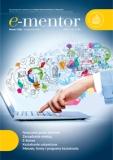Reshaping teaching and learning with 3D printing technologies
Reshaping teaching and learning with 3D printing technologies
Author(s): Michael A. KolitskySubject(s): Essay|Book Review |Scientific Life
Published by: Szkoła Główna Handlowa w Warszawie, Fundacja Promocji i Akredytacji Kierunków Ekonomicznych
Keywords: 3D printing technologies; 3D printed tactile learning objects
Summary/Abstract: The NMC (New Media Consortium) Horizon Report in 2014 listed 3D printing as a technology that is two to three years from widespread adoption. In this report, 3D printing was also classified as a disruptive technology especially for the manufacturing sector. A review of the current literature ranging from journal publications to news reports of how 3D printing technologies are changing the way teachers teach and students learn is the focus of this report. 3D printing technologies include 3D printers, 3D scanners and the recently introduced 3Doodler pen. The widespread rise in popularity of 3D printing technologies is directly correlated with their availability at a lower cost in the consumer market. 3D printing technologies are causing educators to refocus attention from the digital or virtual environment to the real world, where 3D printed objects can be touched and felt. The stl (stereolithography) file is the common file type used for 3D printing and although CAD (computer-aided design) software is the ideal software for making stl files, there are other software choices for producing CAD-free stl files like PhotoToMesh and 123D Catch. How 3D printing technologies are currently being used across the curriculum by teachers as well as students demonstrates the increasing interest in and success with its usage in the learning environment. The growing interest in making and using 3D printed tactile learning objects by the blind or visually impaired points to a future where image-intensive courses and textbooks will have available 3D prints when touch is the primary method for learning. 3D printing and related technologies appear poised to become even more significant as it becomes clearer from the work of early adopters how best these technologies can be employed for teaching and learning.
Journal: e-mentor
- Issue Year: 56/2014
- Issue No: 4
- Page Range: 84-94
- Page Count: 11

